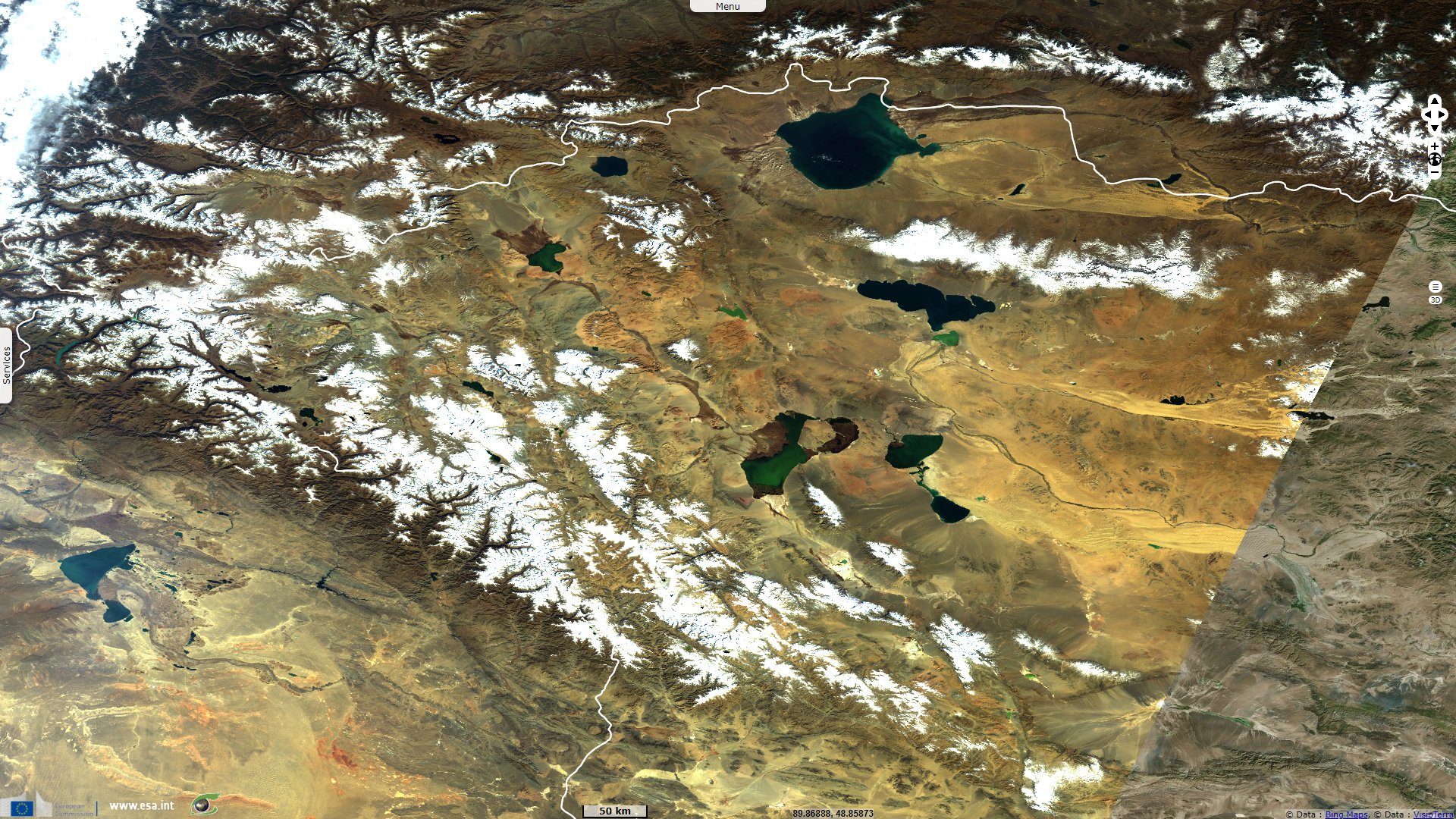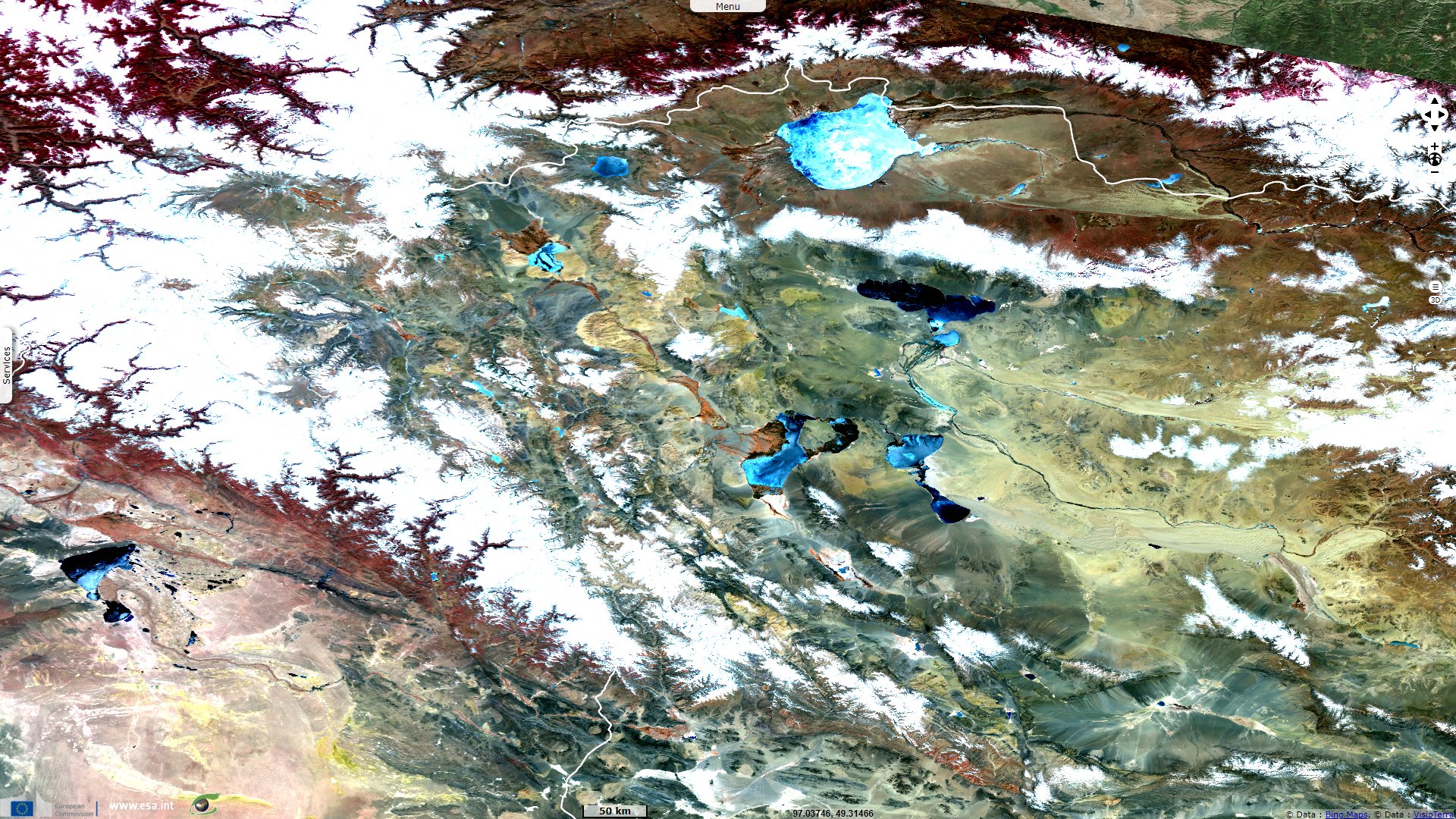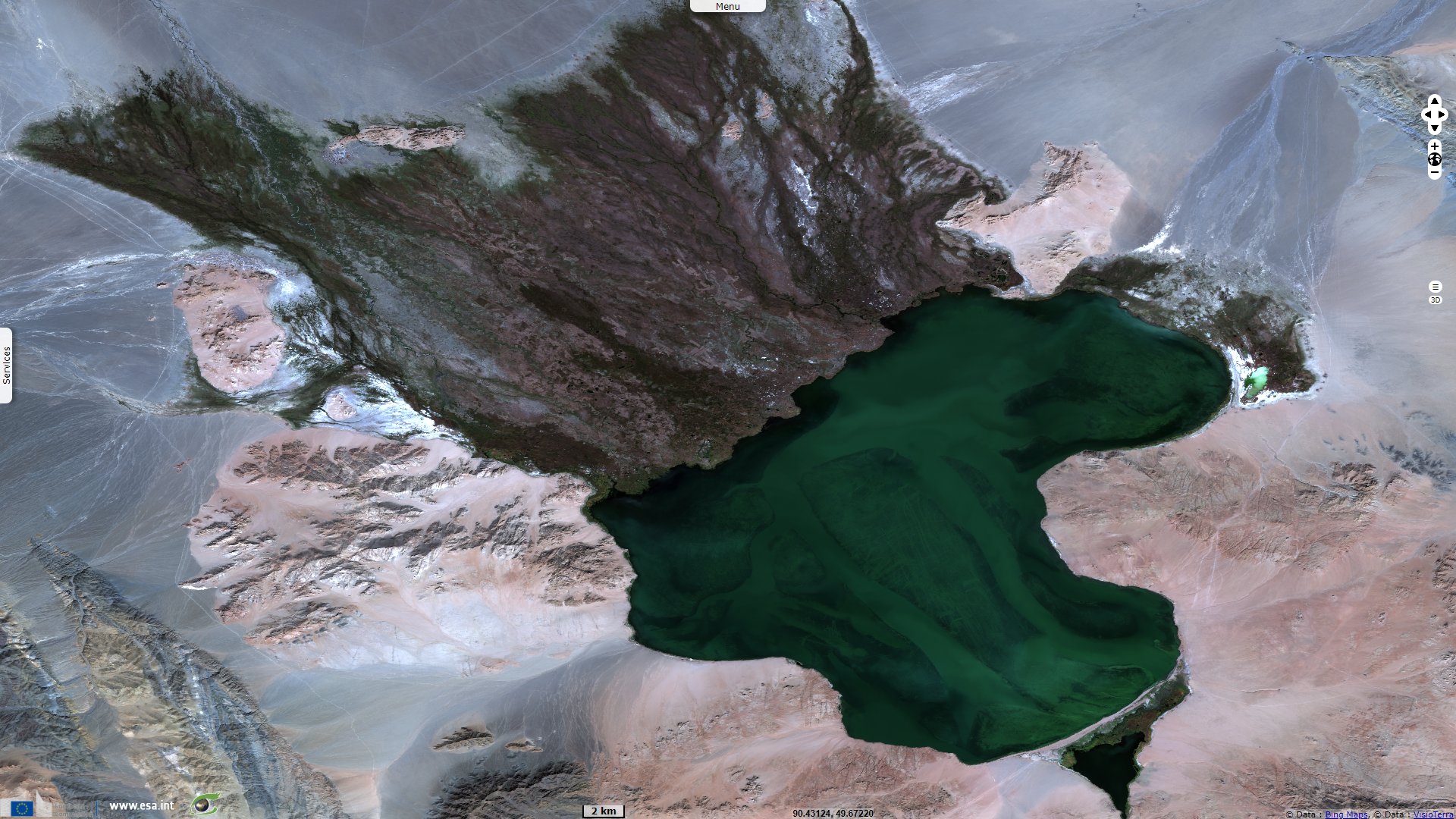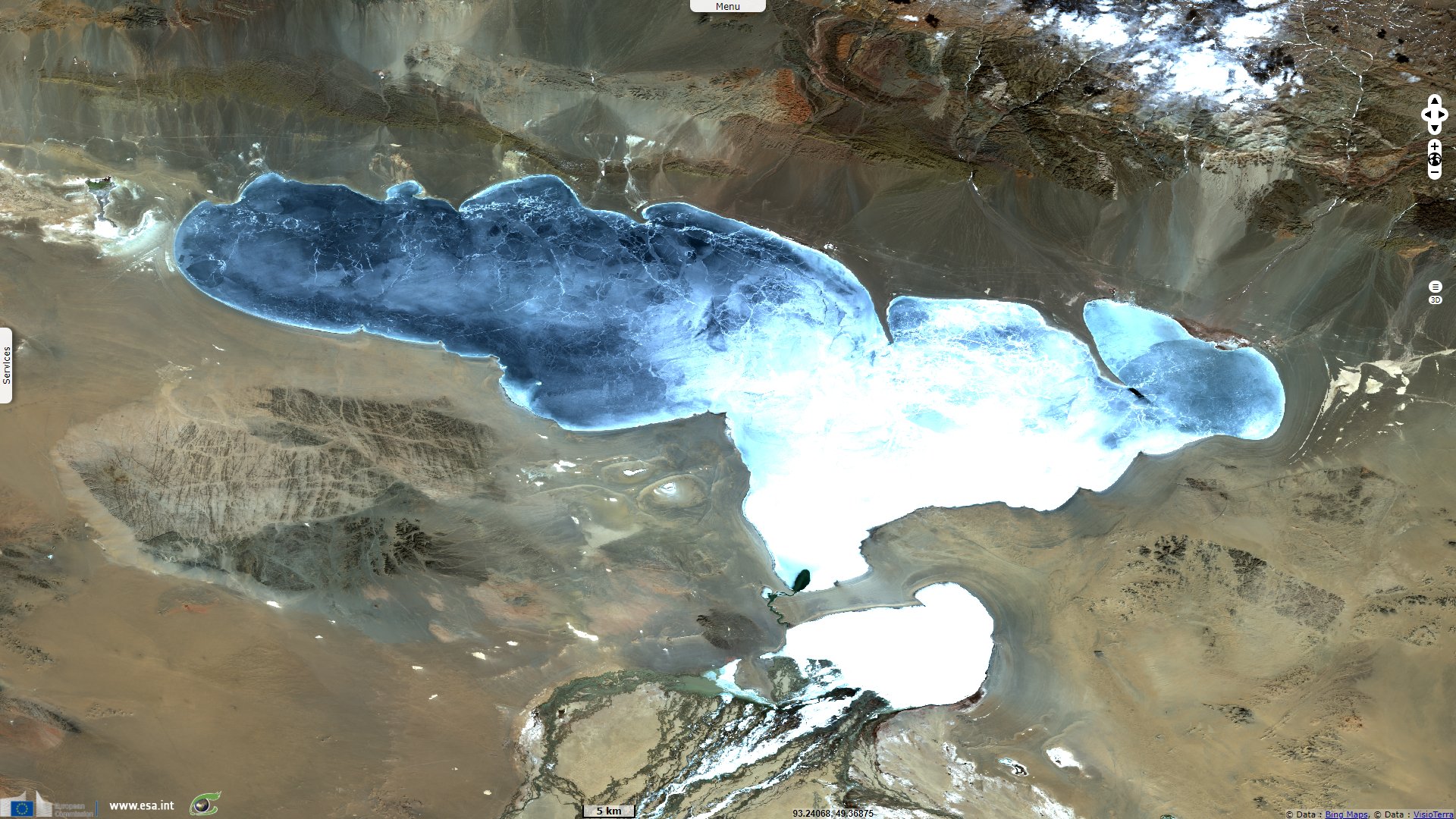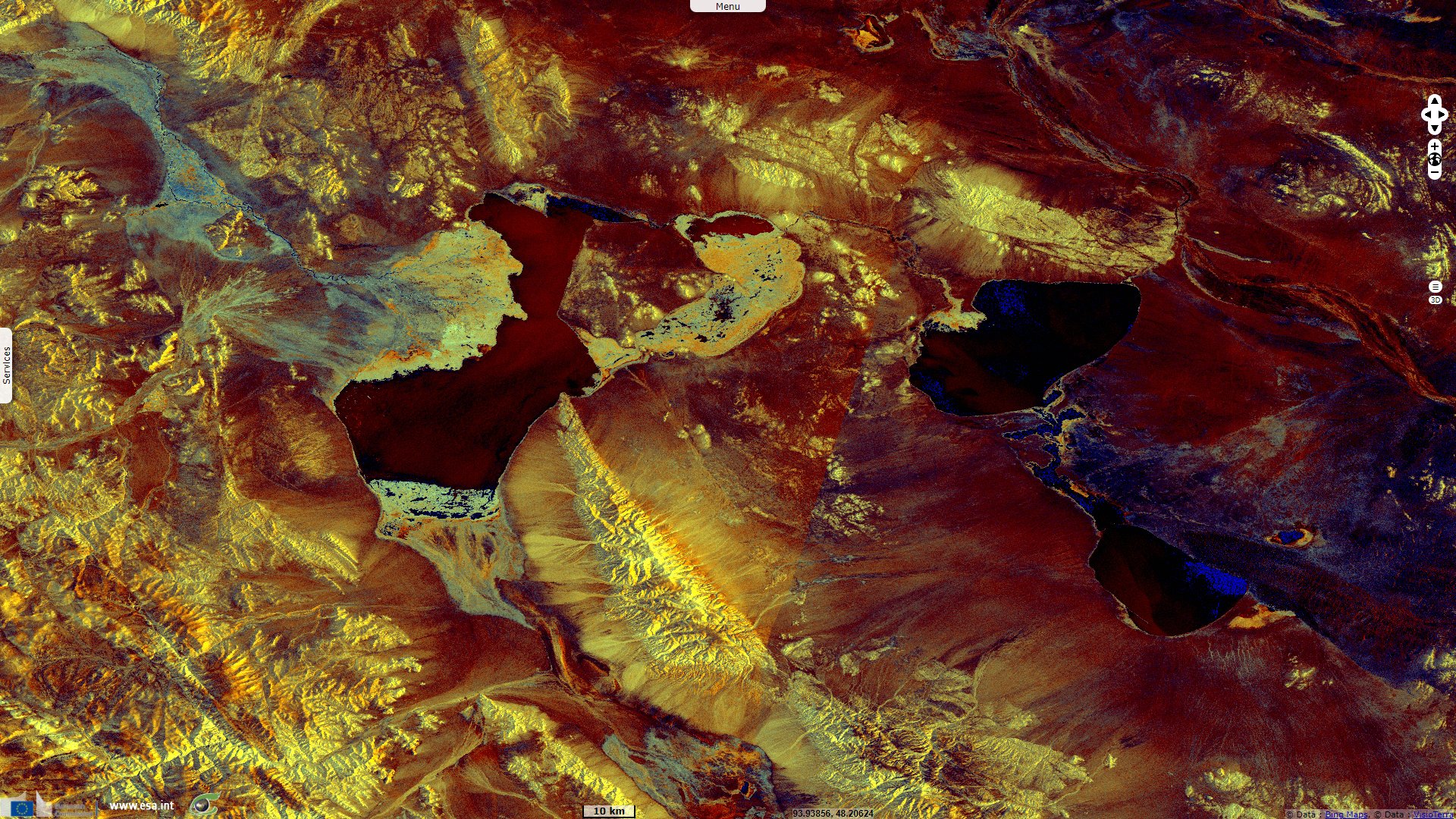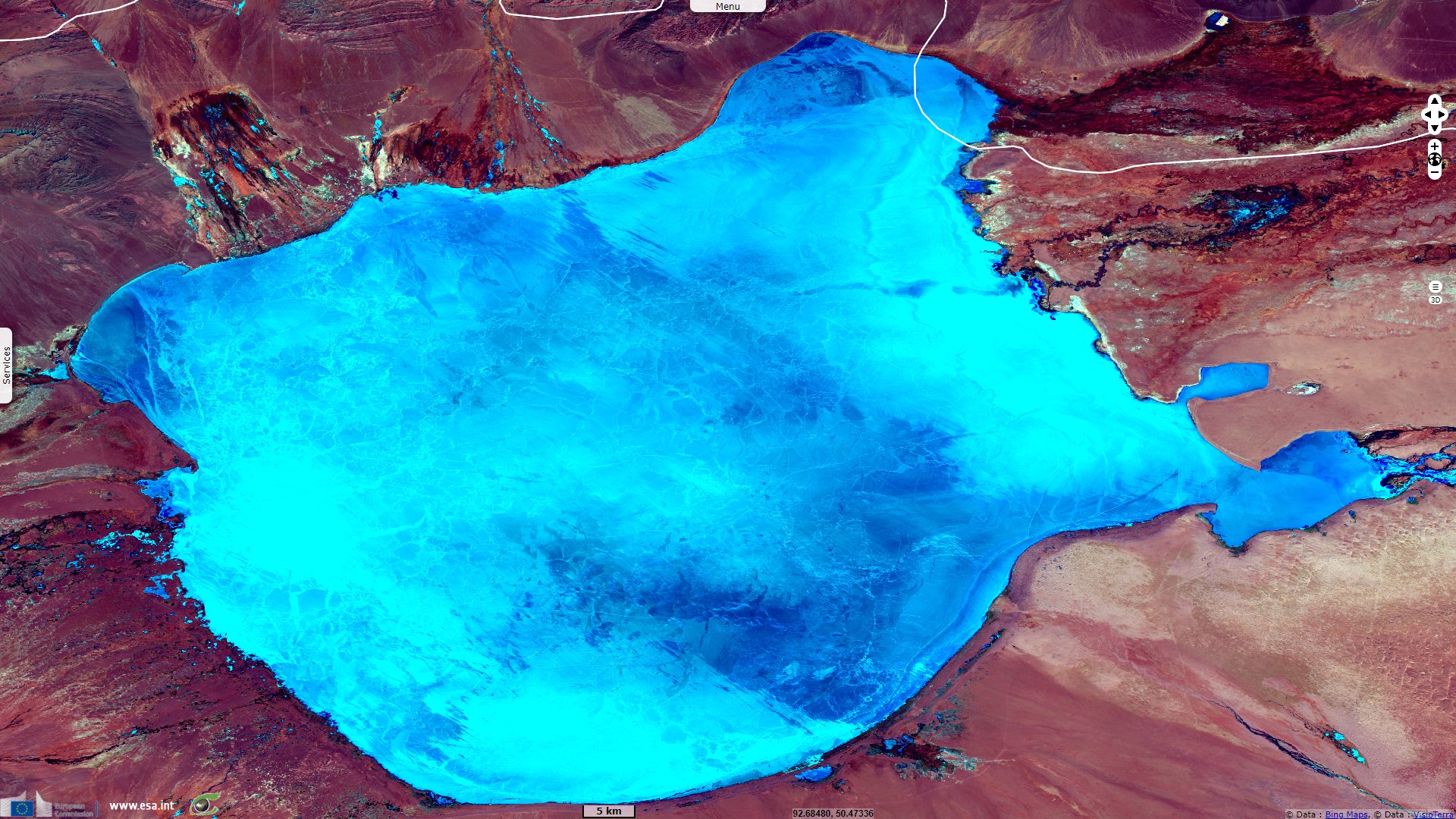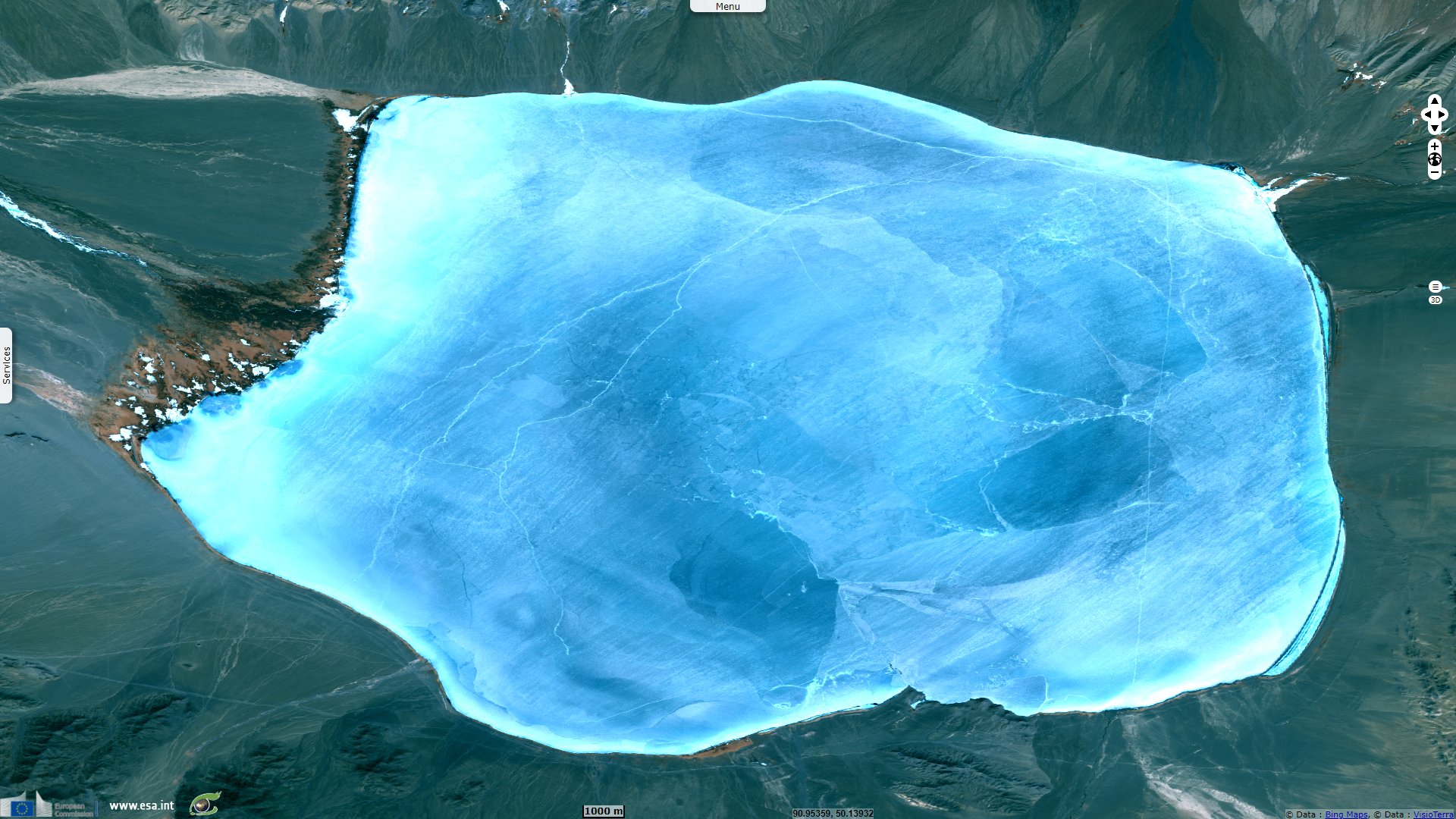Biodiversity in the Great Lakes Depression, Mongolia
Sentinel-1 CSAR IW acquired on 21 April 2019 from 00:04:14 to 00:05:04 UTC
...
Sentinel-2 MSI acquired on 05 April 2021 at 04:56:59 UTC
Sentinel-3 OLCI FR acquired on 16 April 2021 at 04:15:44 UTC
Sentinel-2 MSI acquired on 15 September 2021 at 05:06:49 UTC
...
Sentinel-2 MSI acquired on 05 April 2021 at 04:56:59 UTC
Sentinel-3 OLCI FR acquired on 16 April 2021 at 04:15:44 UTC
Sentinel-2 MSI acquired on 15 September 2021 at 05:06:49 UTC
Keyword(s): Land, salt lakes, endorheic basin, desert, biodiversity, UNESCO Biosphere reserve, Ramsar site, Mongolia, Russia
Located of the north-west of Mongolia, the Great Lakes of Mongolia are located in a arid region within an endorheic basin. These wetlands constitute an important shelter for biodiversity. Batnasan N. of the WWF Mongolia Programme Office describes the basin as follows: "The Great Lakes Depression (Basin) contains the most important wetlands of Central Asia. These wetlands are characterized by shallow and interconnected lakes with an extensive reed belt fringing its shores. Located in a desert steppe environment the lakes are key to survival of many residents, rare and endangered migrating birds, such as Eurasian Spoonbill, Black Stork, Osprey, White-tailed Eagle, Swan Goose, and Bar-headed Goose. Only a few individuals of Pelican remain in the Great Lakes Basin in Mongolia. They nest in catchment areas of rivers and lakes that have abundant fish and vegetation." Current Land use around the wetland is limited to semi-nomadic animal husbandry since some nomadic families live along the shorelines using wetlands as pasture and watering points.
Lake Achit and its surrounding wetlands are recognized as a wetland of international importance by the Ramsar Convention: "Freshwater shallow lakes in the Khovd River basin in western Mongolia, with the Achit Lake being the largest in the Mongolian Altai range. The site, lying in an intermountain basin at 1435m, includes Devel State Nature Reserve to the south (1,030ha). Lakes are frozen from November to May. Important breeding and resting ground for a great variety of waterbirds, many listed in the Mongolian and IUCN Red Books, Red Data Book of Threatened Birds of Asia, CITES and CMS."
A smaller lake south of the bigger Hyargas Nuur, another refuge for fauna is Ayrag Nuur, "a shallow, freshwater lake in the Mongolian Great Lakes Basin. An exceptionally important breeding and resting site for a variety of waterbirds and the only remaining place in Mongolia where the Dalmatian Pelican regularly comes to breed. The lake is of fundamental importance for the groundwater recharge of the area. Other noteworthy waterbird species include the globally threatened Swan Goose and Relict Gull.", as described by its Ramsar sheet.
Located further south, Har Us Nuur National Park encompasses "Three large but shallow lakes - Har Us Nuur, Har Nuur and Dorgon Nuur. Vast reedbeds and extensive aquatic plant communities provide a suitable habitat for a large number of breeding and migratory waterbirds, including the globally threatened Swan Goose, Ferruginous Duck, White-headed Duck and Relict Gull. Three species of fish endemic to Western Mongolia occur in these lakes. The lakes are of fundamental importance for the groundwater recharge of the area, and are of social and cultural significance because of the presence of a number of sacred places and archeological sites."
Among the sub-basins of the Great Lakes of Mongolia, the one that has acquired the status of UNESCO Biosphere Reserve is the Uvs Nuur Basin (10 689 km²). It "is the northernmost of the enclosed basins of Central Asia. It takes its name from Uvs Nuur Lake, a large, shallow and very saline lake, important for migrating birds, waterfowl and seabirds. The site is made up of twelve protected areas representing the major biomes of eastern Eurasia."
"The Uvs nuur basin is one of the key areas of the Altai-Sayan Ecoregion, included in the Global 200 list of the virgin or little-modified ecoregions of the world. The geographical position and climate of the Uvs lake depression are distinguished by an exceptional contrast, due to its position in the center of Asia with a relative high altitude and a peculiar relief structure. The highest point of these territory is the peak of the Turgen Mountain Range and the lowest point is the Uvs lake. The Uvs Lake’s water is remainder of a huge saline sea, which covered a much larger area several thousand years ago."
"The Uvs nuur basin and its surroundings boast an extraordinary landscape diversity ranging from cold desert and steppe to floodplain forests and diverse wetlands, fixed sand dunes and even tundra. The basin is characterized by mixed mountains and highland systems with a total size of 70 000 km². The lake is the largest lake in Mongolia and has a length of 84 km and a width of 79 km, with an average depth of 6 m" and a maximum depth of 20 m. It freezes over from November to May and covers 3350 km² at 759 m above sea level.
"The Biosphere Reserve serves as a significance scientific place for studying the evolution of the environment from the Ice Age to present-day conditions due to the remnant glaciers, Pleistocene ice sheets and numerous glacial lakes. The diverse landscape is inhabited by a rich diversity of species, including locally endemic plants and endangered species like the snow leopard."
The Ramsar sheet dedicated to Uvs nuur concludes: "With reedbeds and river deltas it provides significant nesting and resting areas for 215 migratory waterbird species such as White-headed Duck, Swan Goose, both 'endangered' in the Red List of IUCN, and many other nationally and globally threatened flora and fauna species including endemic fish are supported."

